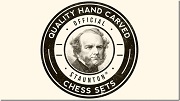‘A Chess Player’ writing from Llanelli in March 1835, wrote that, “three gentlemen resident here, are willing to challenge any three gentlemen in Swansea at a game of chess”, with moves being transmitted by post. There had already been some biting correspondence in the paper between himself and ‘Jonathon Bradford’ of Swansea.
Writing from Oystermouth on 1st April 1835, Jonathon Bradford accepted the challenge. After outlaying playing and scoring conditions he wrote, “I will forward, per post, every Monday my move…. addressed to ‘A.C.P., Post Office, Llanelly’.” The latter would reply and the two moves would be published in the Cambrian on Friday. Bradford staked half a guinea and asked that “each of the three Llanelly professors to cover to the same amount, or no contest.” It was all played anonymously with Bradford adding, “Never shall man know me in my real character to be the one I now assume; therefore, your correspondents may fear naught on that touchy point.” Further negotiations ensued and it was agreed that Llanelli make their moves on Monday and Swansea on Wednesday.
The quaint scoring of the games started thus:
WHITE RED
1st. K.P. from 13 to 29 1st. K.P. from 53 to 37
2nd. K. B. from 6 to 27 2nd. K. B. from 62 to 35
3rd. Q’s B.P. from 11 to 19 3rd. Q from 60 to 46
It is obvious from the first few moves that none of the players could be considered ‘masters’ at the game. By May, Bradford had lost a pawn and a Bishop and given up the game – they had reached move FIVE! The question of money had already been dropped and the Llanelli writer issued a repeat of his original challenge, with the loser to pay for the postage.
They say no publicity is bad publicity but in spite of this contentious correspondence, no further matches seem to have taken place.
In April 1840 another match was reported; this time between ‘London Player’ and ‘Llanelly Player’. This time the game proceeded with acrimonious exchanges and Llanelli won on move 20. A t least, one may assume so although no resignation was published. This must be one of the earliest games recorded in Wales. Two games were started but there is no record of the result of the second one. Anonymity was rife in all newspaper correspondence and the only clue to the Llanelly player were his initials – R. E.
- e4 e5 2. Nf3 Nc6 3. Bc4 Bc5 4. b4 Bxb4 5. c3 Ba5 6. 0-0 Nf6 7. d4 Nxe4 8. dxe5 d6 9. Qd5 Be6 10. Qxe4 d5 11. Bxd5 Qxd5 12. Qf4 0-0-0 13. Bd2 h6 14. Na3 Bc5 15. Qa4 a6 16. Be3 Qxc3 17. Nd2 Nxe5 18. Rab1 Ng4 19. Rfc1 Qe5 20. Ba7 Qxh2+ 21. Kf1 Rxd2 22. Rxc7+ Bxc7 23. Ke1 Rd8 24. Resigns. The game finished in August.
Postal chess had to suffice during this era as there were no clubs in West Wales. An R. James from Llanelli had one of his games published in the Birmingham Mercury in 1854.
After that fine start to proceedings, one has to wait nearly 40 years to find another mention of the game in the town. On Wednesday 26th November, 1879, a first ever match between Llanelly and Swansea was played at Swansea. There were six players per team, each player having two games. In the event, six games out of eleven were won by Llanelli on the night. The outstanding game was postponed and played at Llanelli the following Monday, Swansea winning and thereby tying the match. The Llanelli team was: Bourne, Home, J. C. Howell, A. E. Old, Read and William Samuel. A return match saw Swansea succeeding ‘by two games”.
John Bourne (1846-1899) was a Londoner who moved to Llanelli in 1877 to become a partner in in a firm manufacturing tinplate. He continued to play for the club and took a board against Lasker when he visited.
Charles S. Read could be either the father or son of that name. The father was a cashier at the tinplate works, born in Cornwall in 1837 and the son a stationmaster born 1856.
William Samuel was the son of ship owner and shop keeper, Captain Simon Samuel. A younger son, Henry, later entered the club and became its premier player. William and his father were pioneers in the town in building iron vessels.
The secretary of the club in the 1890s was J. W. Lobbett and he was to remain the backbone of the club for the next fifty years.
Llanelli town was known as ‘Tinopolis’ and it comes as no surprise that most strong chess players to emerge were originally from England. Many came from Cornwall from which county they had followed industry to South Wales.
CHALLENGE CUP
When the club did enter the South Wales competition it did so with immediate effect, narrowly defeating Aberdare following a disputed unfinished game, to reach the final of the Challenge Cup in April 1891. The final was played against Cardiff at the Castle Hotel in Neath. The team was well beaten, 9-3, by an experienced Cardiff side but had performed above expectations to reach the final. The Llanelli team was: C. S. Read, A. E. Hiles, J. G. Daw, S. Daw, J. W. Paton, and D. R. Jones.
Arthur Hiles (1854-1929) was licensee of the Red Lion Inn at Pembrey and later of the Tavern & Trap Hotel in Gorseinon and President of the Llanelli Quoit club. It is always useful to have a licensee amongst your members! He evidently fancied himself as something of an inventor as there are a few patents under his name for a ‘lever grip railway chair’ and ‘improvements in machinery for cleaning tin, terne and other metal plates’ and ‘a swimming appliance.’
James Daw (1845-1927), another native of Cornwall and like Read a widower, chaired the committee of the local Mechanics Institute and it will not therefore be a surprise to find the club meeting there in the 1890s. His relationship to Samuel Daw, who was thirteen years younger, is not certain. Samuel was employed as an analytical chemist.
John Paton (1867-1931) was a colliery agent and became manager of Sylen colliery.
Llanelli competed in the Cup most years and their top board varied, the most frequent players there being C. S. Read and A. S. Jones.
No competitions were held between 1898 and 1903 and when action resumed Henry Samuel became and remained for many years the club’s top board.
In March 1905 when the ‘newly arranged’ South Wales Chess Association organised a tournament in Cardiff, Llanelli took part along with Newport, Blaina and the host club. A K.O. for the Challenge Cup took place, Llanelli losing heavily to Cardiff.
In May, Llanelli made the long trip to Cardiff where they played and lost to Barry in the final of the Challenge Cup.
They lost again in 1909, this time to Newport, the final being played at Neath. This final was repeated in 1910. Llanelli proved themselves once again the best side in the western division but they never succeeded in winning the Challenge Cup.
The strongest postal chess player ever to come from Wales made his chess debut at the Llanelli club in the early 1900s. The Reverend Evan Griffiths was born at Llwynfilwa farm near Llangendeirne in 1875. He learned the game whilst studying for a mathematics degree at Lampeter College and, shortly afterwards, joined the Llanelli club. His ministry took him away from the area, finally becoming headmaster of Lewes Grammar School, 1917 to 1932. He won the British Correspondence Chess Championship in 1908, 1910, 1912 and 1913.

Rev. Evan Griffiths 1875-1956
THE GAP YEARS
The South Wales Chess Association started up again after the war in 1919 but there is no evidence of Llanelli rejoining before the 1928-9 season. It is likely that they continued to meet as a club during this period as some of the same members from the pre-war club re-appear later. Evidence for this can be found in the trophy (below) between Llanelli YMCA and Swansea YMCA in 1927.
 |
 |
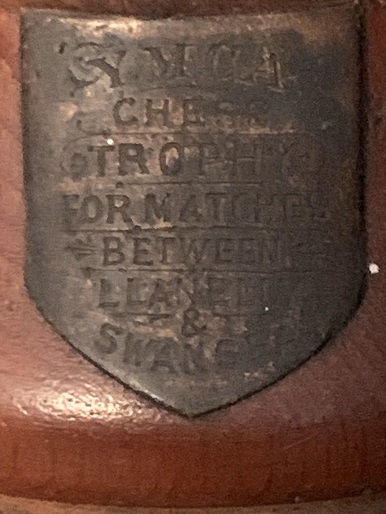 |
The club managed to beat Tonyrefail in the Cup 1928-9 but did not qualify for the final stages. They did not enter the following year and once more the SWCA became moribund.
When the society re-formed in 1935 Llanelli played in the western section alongside Port Talbot, Swansea, (Swansea) Rooks, Gorseinon and Cwmamman. Three rounds were played and Llanelli lost to both Swansea and Port Talbot, having a bye in the other round.
The club had an ‘occasional’ relationship with SWCA. They played in 1936 but not in 1937. In 1938-9 they beat Port Talbot to qualify for the final but there they were defeated 3.5-2.5 by Barry. In the final season before war again took pre-eminence, Llanelli lost to Swansea, but the 1939-40 season was never completed.
WEST WALES CHESS LEAGUE
The Llanelli team also competed in the newly formed (1932) West Wales Chess League and a photograph of them as league winners in 1934 shows the old stalwarts, H. Samuel, W. W. Lobbett and D. R. Jones still to the fore. This was the oldest team ever to win the league with the top three boards being well over 70 years of age.

Llanelli League Champions 1933-4
Back: (L-R) R.R.Morris, J.Williams, Duncan Auld, Harold Williams, James Little, H.R. Evans.
Front: Robinson, D.R.Jones, H.Samuel, J. W. Lobbett, Herbert M. Morton
David R. Jones (1868-1935) served in World War 1 with the Royal Engineers and worked at the Llanelli Copper Works in charge of the yellow metal department. He became mayor of Llanelli in 1923.
The long-serving club secretary, James Lobbett (1853-1936), worked as an accountant and collector for Llanelli Harbour Trust and was president of Llanelli YMCA. He was a vice-president of the West Wales League from 1934 to 1936.
Several players from Llanelli became Vice-Presidents of the West Wales League during this period: Rev. J. T. Davies M. A. 1935-1939, W. J. White 1937-1959, and H. R. Evans 1949-1959. J. L. Hawkins of Llanelli was strong enough to tie with A. O. Jones for the West Wales title in 1939.
The Llanelli club was successful in winning the West Wales League in 1939, 1946, 1963, 1965 and 1977. Shortly after winning the title in 1946 the club was disbanded and was not re-formed until 1962.
The new club was led by two former Swansea players, Dilwyn Jones and Vivian Davies. The latter was a brilliant young player; then only 15 years of age, he had already won the Welsh Under 14 championship. He went on to become joint Under 18 champion in 1965 and to play in the Glorney Cup many times for Wales between 1964 and 1966, also winning the West Wales Senior Championship in 1966. Viv (full name William Vivian Davies) became the eminent head of the Egyptology Department at the British Museum. Dilwyn Jones became secretary and treasurer of the West Wales League for a short while; he was West Wales Champion in 1965. These two players were instrumental in the successes of the club in 1963 and 1965.
They were not the only exciting young players to emerge from the area and others also had success in the annual Welsh Secondary Schools Championships held annually in Cardiff, notably A. Davies who became Welsh Under 12 Champion in 1968 and P. Williams, Under 13 Champion the following year.
After 1954 the Challenge Cup competition became a national affair with the winners of each Welsh zone playing in a knock-out competition. Qualifying alongside Lampeter, Cardiff and Newport, Llanelli regrettably never got to compete as the whole competition was abandoned because of delays. Two years later they lost in the semi-final to a strong Aberystwyth University team led by future Welsh champion, D. I. W. Reynolds. In 1977 they lost in the semi-final to Bridgend.
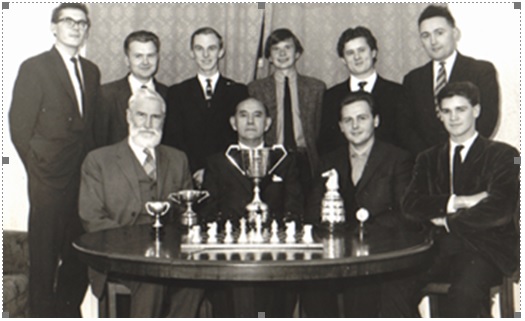
Photo I.P.Eustis
Llanelli winners of the Dr.Hanson Silver Knight Trophy 1964-5
and the E.J.Clarke Trophy (centre) won by Dilwyn Jones.
(Rear) R.Mahoney, I.P.Eustis, P.B.Scott, G.Pugh-Jones, D.W.Rees, M.G.Jones.
(Seated) A member of the Deaf Institute where the club played,…Wright, D.Jones, W.V.Davies.
The victorious league winning team in 1977 was led by Paul Botto and Malcom Jones. Paul represented Wales in the Glorney Cup, the European Junior Championships, and the World Junior Championships. Malcolm was originally from Brecon. He won the British Boys Club Championships several times and the Welsh Correspondence Chess Championship.
The later years of the Llanelli club saw the club’s town rivals, White Knights, dominate, but the original club continued to function under the able administration of Frank Hatto who deserves his own section:
FRANK HATTO
Frank was born in Cardiff and his early chess playing was in Monmouthshire. Even as late as 1972 he was playing in the Gwent Championships. Frank was never one of the strongest players but his passion for the game matched the best grandmasters. He was one of those who revived the dormant Llanelli chess club in 1962 and he stayed a member and sometime secretary until its demise.
It would be fair to say that he was not well known in chess circles until, in 1969, the Welsh Chess Union decided to secede from the British Chess Federation. Silence then greeted the decision by the Union secretary not to stand for office in the new autonomous WCU. No-one really wanted the onerous task of leading Wales into the unknown. Frank, seated at the back of a packed hall, then put his hand up and volunteered for the secretary’s job. Naturally everyone else looked relieved although they had no idea what sort of a job he would make of it. Until that time Frank had only been a player and not an administrator. In the end it would be fair to say that it was Frank who made sure that Wales’ independence was a complete success.
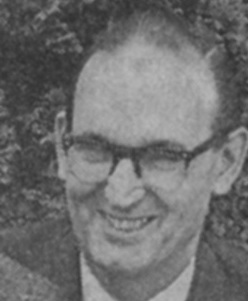
Frank Hatto 1926-c2010
He was certainly ambitious and he opened his large home, Park House, Llangennech, to entertain Dr. Max Euwe, President of FIDE and ex-world champion, on his visit to assess the new member.
When the British Championships resulted in an unprecedented seven-way tie, Frank again opened his house for the play-offs of the 1974 British Championships which had ended in a seven-way tie. George Botterill beat off the rest, including Welshman Howard Williams, to win the title.
Frank served the Welsh Chess Union as Chief Executive and President and became a BCF and International Chess arbiter. He allegedly once gave all the Joneses in the Major Section at Gwbert the Black pieces in the first round ‘to avoid confusion.’
WHITE KNIGHTS
A second club was formed in the town in 1973 when White Knights entered two teams into the West Wales League. The club met in the YMCA whilst the Llanelli club itself moved to the Deaf Institute. The new club was led by Colin Wills, was made up mostly of former Llanelli players, and they went unbeaten in their first season in Division Two to gain promotion. Life was not quite that easy and the year that Llanelli won the league, White Knights finished at the bottom of the same Division.
Some thought was given to the amalgamation of the two clubs in about 1985 when Llanelli finished the season at the foot of Division One, but it never happened. The Llanelli club folded and one very useful acquisition was David Guy who had won the British Deaf Chess Championship.
THE GREAT PLAYERS WHO VISITED LLANELLI
On Saturday, 5th December 1891, J. H. Blackburne, billed as the ‘Blindfold Champion’, visited the Masonic Hall at the Thomas Arms Hotel, and took on 23 club members, playing a total of 32 games, in a simultaneous display. Three guests came from Swansea. Only A. E. Hiles managed to escape with a draw, though that was probably because he had already lost the first game played and there was insufficient progress in the second game to produce a result.
In 1895 the World Champion, Emanuel Lasker visited Llanelli and took on 17 players at the Athenaeum Hall and beat them all. A few players travelled from Swansea in order to take part.
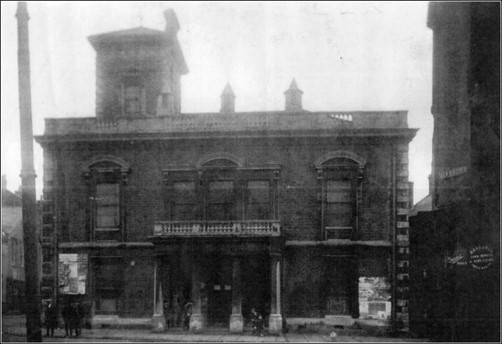
The Atheneum in Llanelli which used to house the Mechanics Institute,
home to Llanelli chess club.
The British Master, F. J. Lee, was the star player who gave a simul in Llanelli in 1906 on a tour of South Wales clubs.
In February 1908 Lasker again visited Llanelli on tour of the South Wales clubs. He won ten and drew with C. F. Read and S. Daw. He also gave a lecture. When he visited Neath, he conceded draws to the Llanelli players S. H. Bevan and H. Samuel.
Henry Samuel was the son of a shopkeeper and ship owner. He was employed as an accountant in the Plate Works. He was the leading player in the club for over 30 years. He died in 1945 aged 88. In his youth he had been a keen sportsman, playing for the town at rugby and cricket and was one of the founders of the rugby code in Wales. His obituary named him as the founder of Llanelly Liberal Club. He was vice-president of the West Wales League from 1934 to 1945 and president for the last year of his life.
The National Liberal Club was the scene of one of the greatest days in Llanelli’s chess story in October 1919 when Jose Raoul Capablanca visited and took on 40 opponents. He conceded five draws but the tiny piece in the Llanelli Star failed to give the names of the successful players. The newspaper spent more time describing the Cuban; “still on the sunny side of 30. He is of medium stature, clean shaven, sturdily built, with olive complexion, dark eyes and a great stock of fine black hair,. The forehead is neither high nor spacious, but the head is massive and longish. An attractive and distinguished-looking young man, extremely modest, but suggesting large reserves of power.” He took five minutes to make a circuit of the tables and the display lasted 3 hours and 40 minutes.
The only other record of a display being given by a chess master in Llanelli before the modern era was a visit by the octogenarian, Jacques Mieses early in 1946, but there was no report published after the event.
CHESS IN THE DISTRICT
The nearest active chess to Llanelli was usually to be found in Swansea, miles away, but in March 1910 a match was organized between players in Kidwelly and Llanelli. The latter introduced some of their weaker players but were once more led by Henry Samuel. The match resulted in a 5-5 draw: 1. T. Mansell 00 H. Samuel 2; 2. G. Elias 1 J. E. Hipkiss 0; 3. J. H. Elias 2 J. Killa 00; 4. W. Dunn Davies 2 D. T. Roberts 00; 5. Dl. Meredith 0 N. S. C……….. 1. This is the only reference that has been found to chess in Kidwelly.
After the Second World War, Llanelli Grammar School began producing some fine young players. A chess society had been formed in the school in 1922 but it was not until 1948-9 that they ventured further afield, entering a team in the Postal Chess League led by Alan Davies and Graham T. D. Jones. The latter went on to win the School Championship that year and represented Wales in their first ever entry into the Glorney Cup competition. Events continued to be internal until 1960 when the school joined the West Wales Secondary Schools Chess Association, whereby they had a match every two weeks. This served to increase both standard and numbers with ‘chess passes’ having to be issued in order to reduce numbers. The following year saw them playing in both the Welsh National Chess Tournament and the West Wales League.
1962 saw Graham Phillips runner-up in the Welsh U18 Championships, being selected for the Welsh Glorney Cup team. The following year he won the Reserves tournament at the Welsh Championships.
The success of the school club during this period was largely due to the support of one of the staff members, Mr. John Davies.
In the late 1970s two new clubs emerged in the district at Trimsaran and Pontyberem. They did not rise above the lower Divisions of the West Wales League but will always be remembered as two of the friendliest clubs in the league. At this time, it was traditional to serve tea at half-time during a match, clocks being stopped for 5 or 10 minutes. At Trimsaran and Pontyberem, the chess was held in rugby club venues and they often adopted the more usual rugby catering style, with a bowl of cawl being served up. Delicious!
Of course, the proliferation of clubs in the area took potential players away from the main Llanelli club, but they also attracted players new to the game who were not prepared to travel far. A very successful, though short-lived, Pontardulais club was set up by Frank Hatto and some other Llanelli members in 1979 and they were boosted by some talented youngsters coming from Hendy Primary School, but the club had folded by 1985.
Chess in Llanelli is alive and well. It reached its peak in the form of the White Knights chess club and that story is till to be told.




